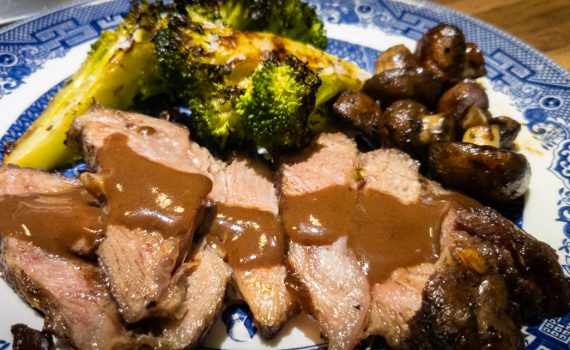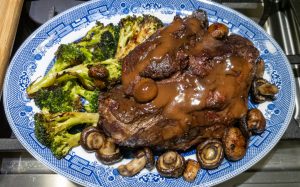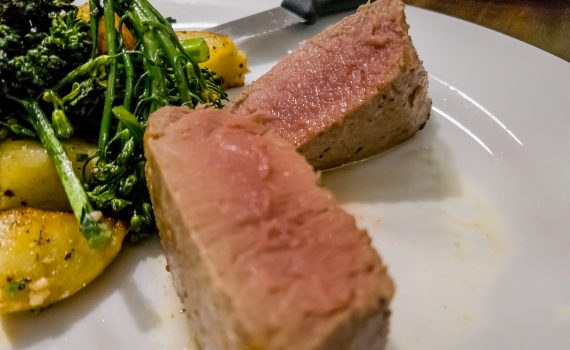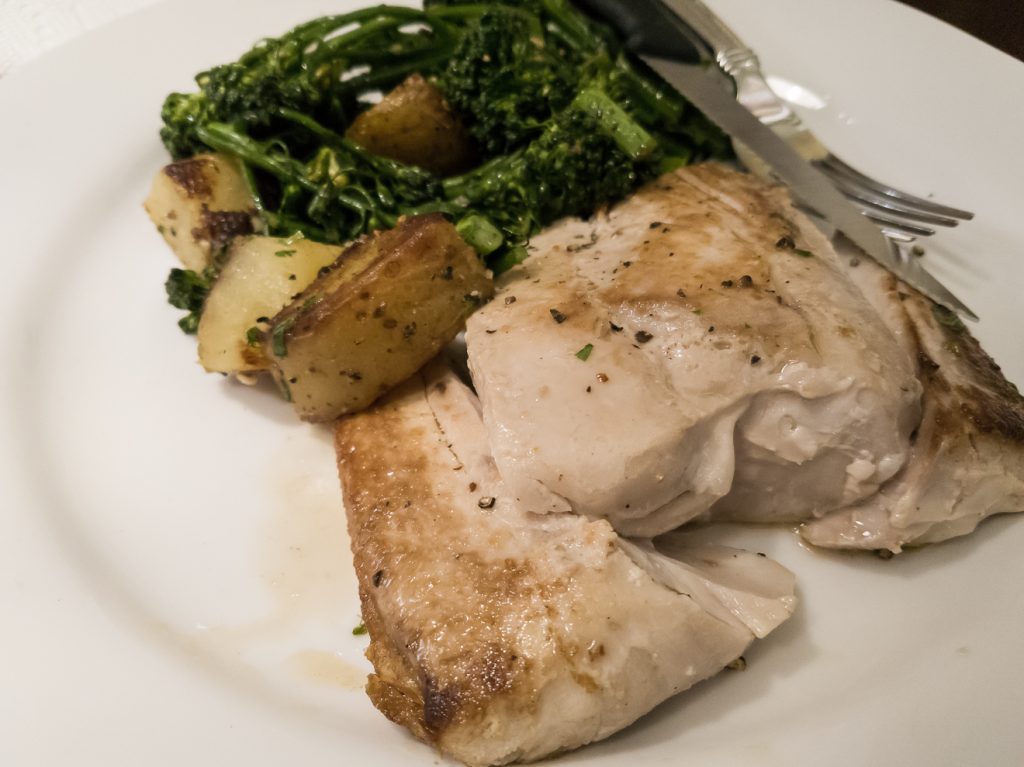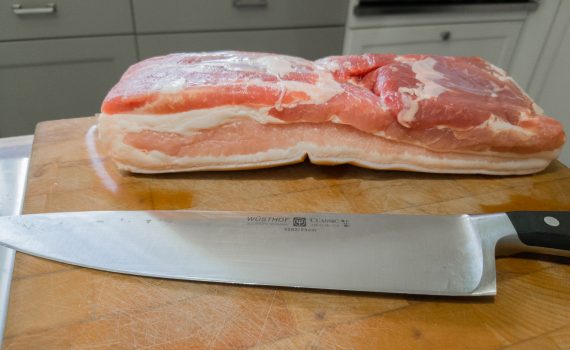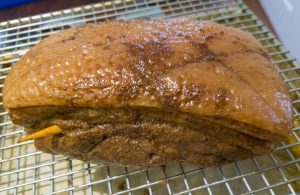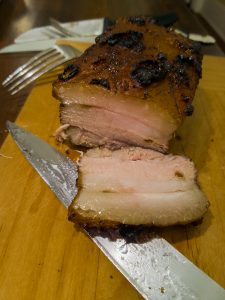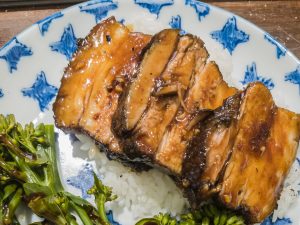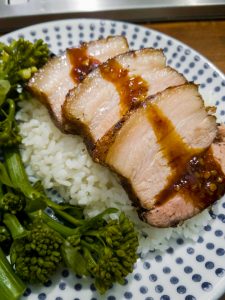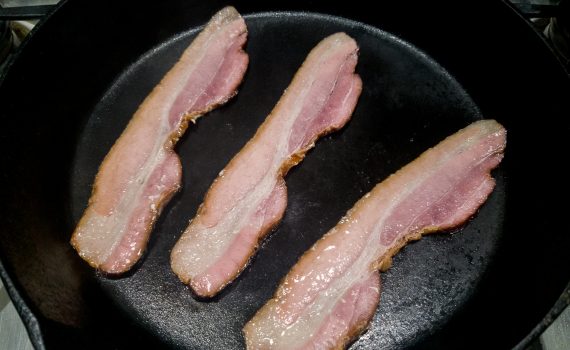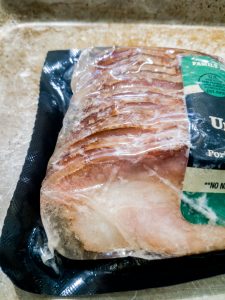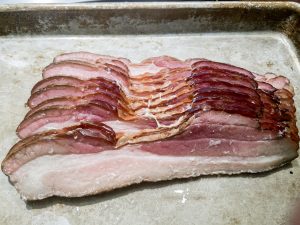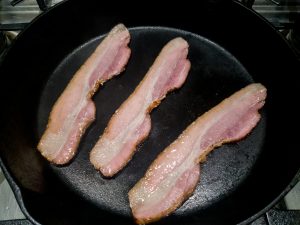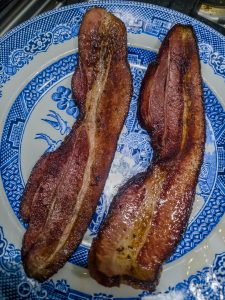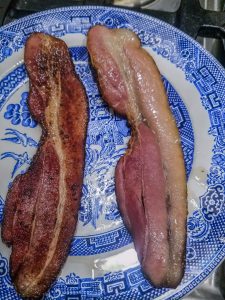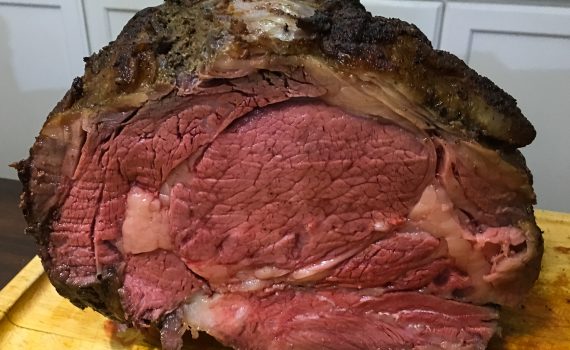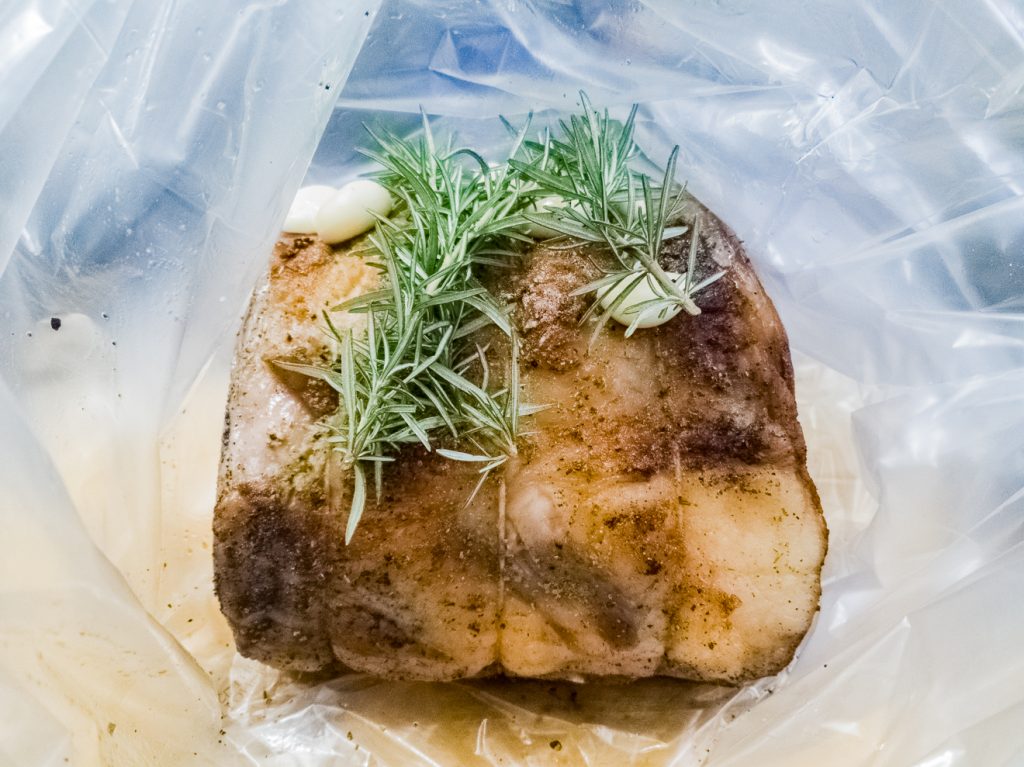Snowy Day Chuck Roast
Category:Food,Sous Vide
Snowy Day Chuck Roast Sous Vide Style
What’s better than a slow cooked beef roast packed with flavor? Have this on a wintry day, or any day, you’re craving comfort food without the fuss.
Course Main Course
Cuisine American
Keyword beef, chuck roast, Keto, sous vide, Sunday dinner
Prep Time 15 minutes minutes
Cook Time 1 day day
Total Time 1 day day 15 minutes minutes
Servings 4 People
Author Kevin
Ingredients
For the Roast
- 3-4 Lbs Beef boneless chuck roast Bone-in would be great too.
- 2 Sprigs Fresh rosemary Leave whole
- 6 Cloves Peeled, fresh garlic, smashed
- Salt & pepper Be generous
- 1 Carrot, peeled and diced
- 1 Stalk Celery, diced Make dice similar size to carrot
- 2 Bay leaf
- 3 Tbsp Avocado oil Don’t use olive oil, smoke point is too low.
For the Sauce
- Contents from cooking bag
- 1 Tbsp Tomato paste
- 1 Cup Rustic red wine
- 2 Tbsp Chilled butter Optional
Instructions
Pre-Searing
- Using your sous vide, ours is the Joule from Chef Steps, set the cambro 3/4 way filled with water on a heat resistant pad to protect your countertops from the long cook this will need. Choose your temp. Here we’re going for that traditional roast look and taste, so we chose 136F. For more info on cooking this beast go to www.chefsteps.com.
- Preheat a large, flatbottomed saute or frying pan on high until smoking hot. Thoroughly season your roast after patting it dry. You need to have the meat surface as dry as possible. Season all sides of the roast.Turn on the exhaust fan!Add the oil, swirl around to cover the surface of the pan. As soon as little whisks of smoke appear, slap down that roast in the pan. Use tongs to push down the roast so all parts are in contact with the pan. Give it a minute or two, depending on your heat source. Flip and do same on all sides.Just before removing, put in the garlic cloves and fresh veg & herbs (rosemary, carrot, celery, and bay in this case) giving them a little heat. Remove everything from pan, set aside.You can stop here, get a glass of wine, and get ready to bag this bad boy.
Bag It & Cook
- Double up two freezer gallon plastic bags. Put in a small amount of oil (EVOO is good) into the inner bag. This is where you’ll put the roast and surround it with the veg evenly on both sides. Put one bay on one side of the roast the other on the other side. Easy!Slowly submerge the bagged roast into the heated sous vide bath. You want to get as much air out as possible from the outer and inner bags. I use the blunt end of a long wooden chopstick to push the roast down, sealing the inner bag first, then the outer. It might still bob up a little. If that’s the case, try placing a heavy spoon in the bottom of the out bag and resubmerge. Hook the bags to the side if you like, or let them free-float as I’ve done here. Since this is a long cook (24 hours!), you’ll need to watch the water level. It’s best to cover the opening of your pot with plastic wrap. We have these nifty white plastic pearls that float on the top to help reduce water loss.
- Get another glass of wine, and return in 24 hours!
- Removing Roast - Gently remove your bagged roast. I hold a towel in one hand to place under the roast as I move it to the cutting board. Take out the roast and set aside for a moment, cover. A souse vide roast doesn’t need to rest technically. You’re going to put that roast back in the water to stay nice and warm while you make a luscious sauce.
Making that Sauce
- The key to making a great sauce is to reduce and strain...strain multiple times! We learned this from watching a few Thomas Keller video’s on sauces. Thank’s Mr. Keller. At this point, dump the contents of the bag into a Windsor pan, or suitable sauce pan along with the tomato paste.Put the roast back into the bags...yes, back into the same bags, and reimmerse into the heated water. Don’t worry, it can’t over cook, but WILL keep your roast perfectly warm until eating time.
- Add 1 cup of earthy red wine. Let it boil away, reducing by half until the liquid coats the back of a spoon. I don’t strain the sauce at this point because I want to get as much flavor out of the veg and herbs as possible. Plus, as they break down, they’ll thicken the sauce.
- Strain the sauce. A good fine-meshed strainer works well here. We add a layer or two of cheese cloth to get the smoothest of sauces.
- Return to the boil. At this point, it’s a matter of time tuning your sauce. Do the following as is your whim:1. Reduce further for a thicker sauce.2. Enhance sauce with store bought Demi glacé- we use veal Demi.3. Further gild the Lilly with more fat! Just before serving, pull off heat and add in a couple of tablespooons of choice butter. Think Kerry Gold! Whisk until combined.
Serving it Up
- Remove the roast from the sous vide to a platter if you’re serving family style...best option for photo ops too.Get as crazy and creative as you like. Add a couple of your favorite veggies to the platter, and pour on a little of that sauce you made over the meat. Garnish with some fresh chopped parsley if you like..or not. Your choice, go wild.Bring to table and watch their faces beam.Plate & Serve

